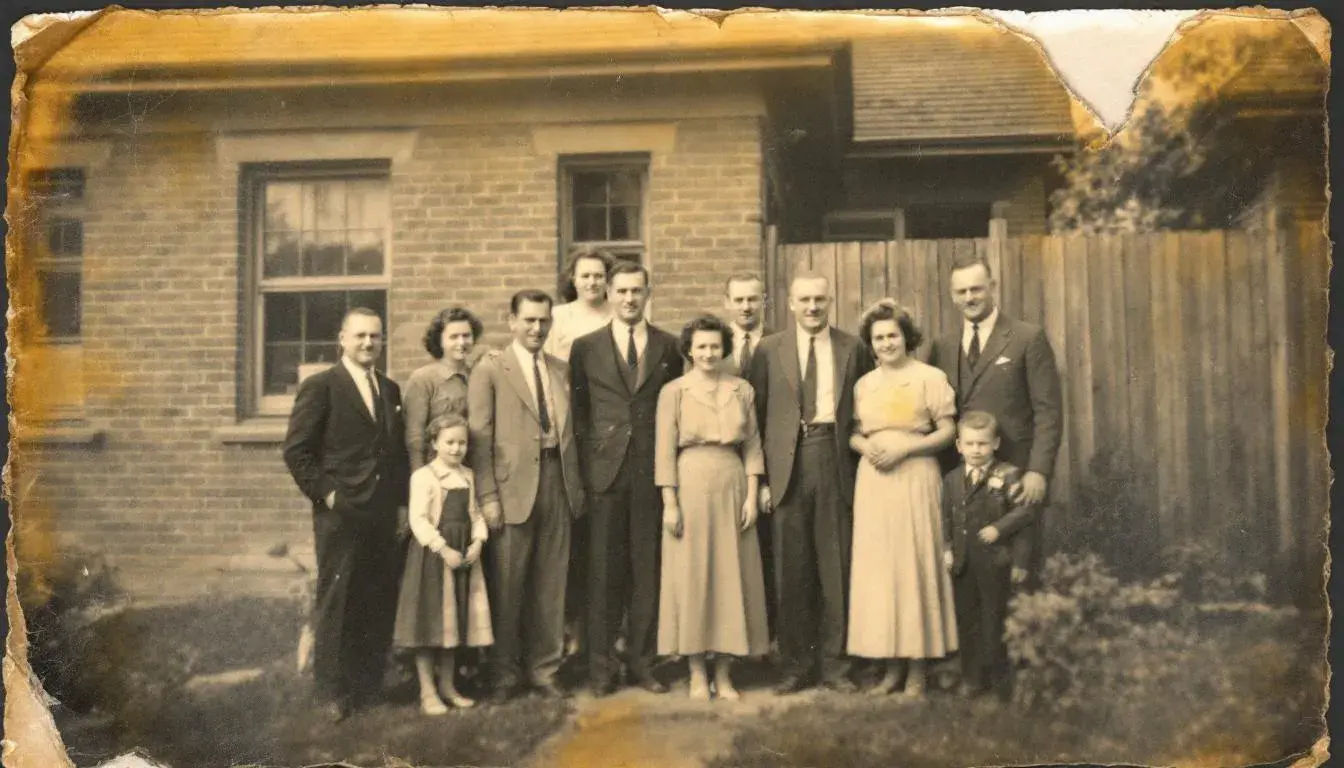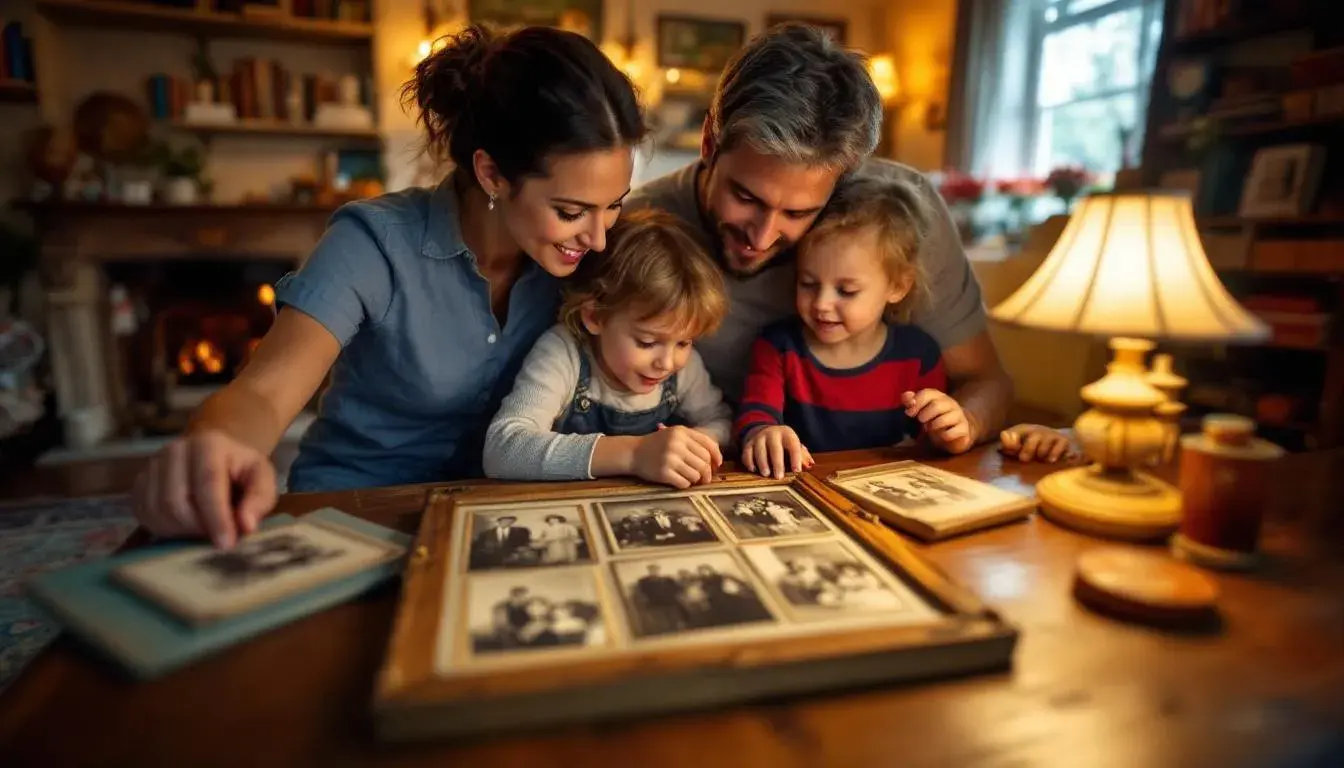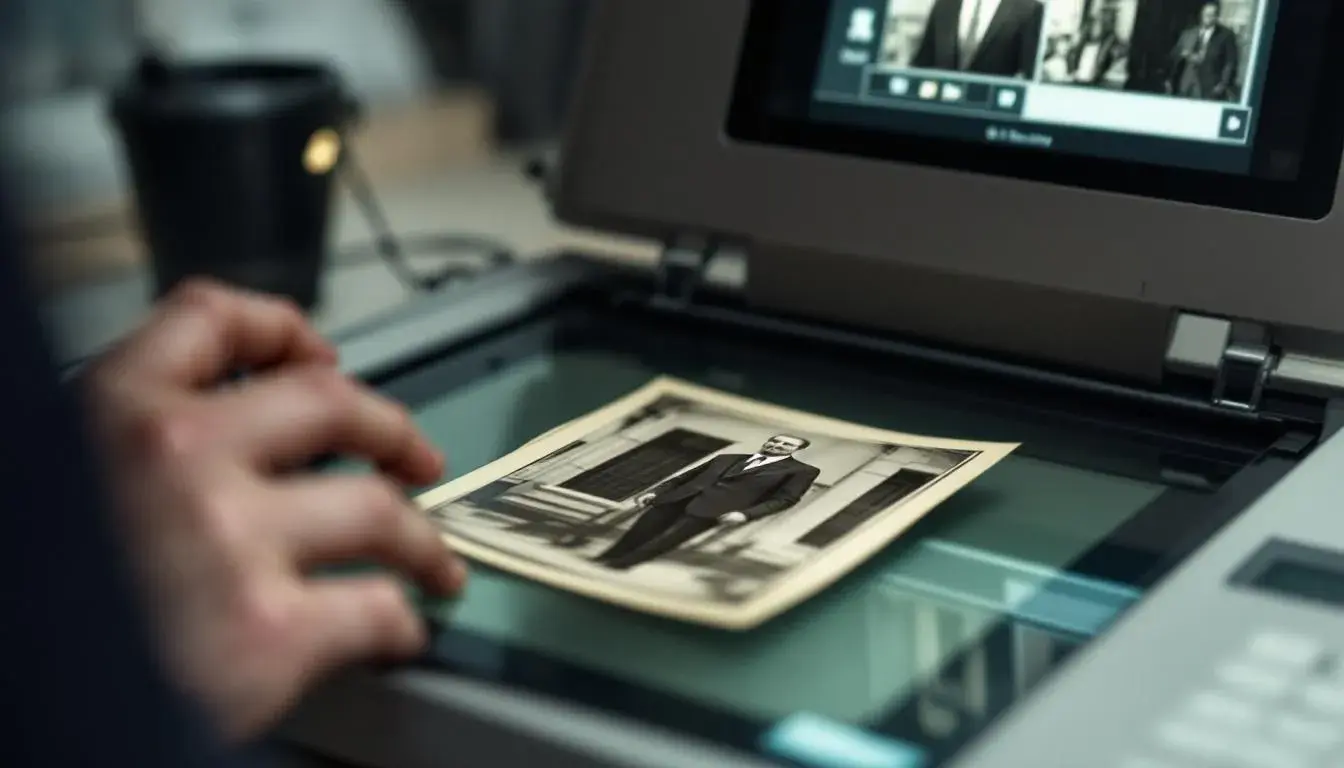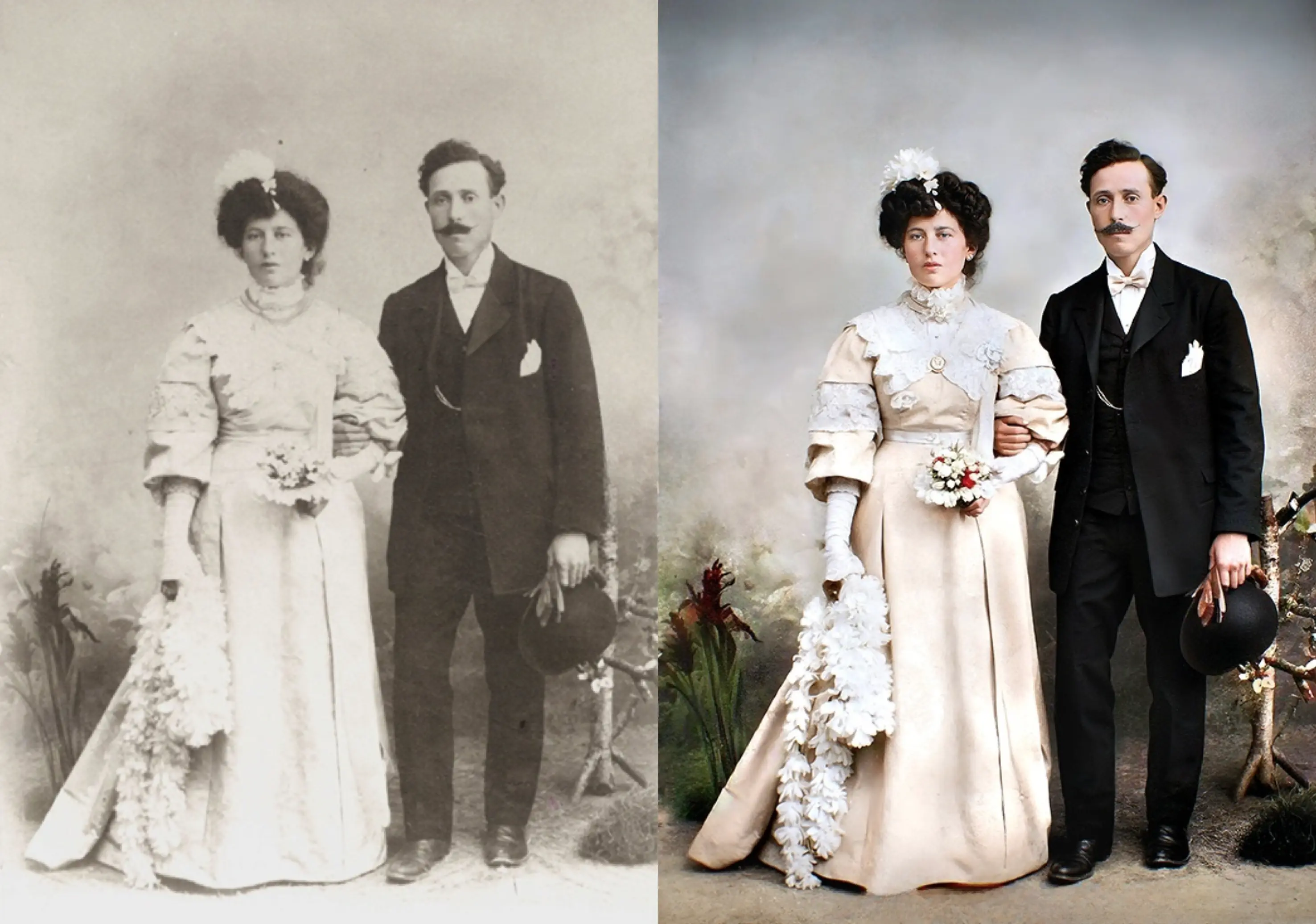Restore Old Photos: Complete Guide to Reviving Your Precious Memories in 2025
1. Introduction: What is Photo Restoration and Why It Matters
Photo restoration is a digital process that helps families, historians, and collectors repair and enhance damaged vintage photographs. In this guide, you'll learn what photo restoration is, why it preserves irreplaceable memories, and how to restore old photos effectively using modern AI tools.
Whether you've discovered a box of faded family old photos in your attic or inherited damaged historical images, photo restoration can breathe new life into these precious memories. This comprehensive guide covers everything from AI-powered restoration tools to manual editing techniques, helping you choose the best approach for your old photographs.

You'll discover restoration techniques, AI versus manual methods, step-by-step processes, and solutions to common challenges. By the end, you'll have the knowledge to transform deteriorating old pictures into crisp, vibrant images that can be shared and preserved for future generations.
2. Understanding Photo Restoration: Key Concepts and Definitions
2.1 Core Definitions
Photo restoration involves repairing, enhancing, and sometimes reconstructing damaged, faded, or deteriorated photographic images. Unlike simple photo editing, restoration specifically focuses on returning an original photo to its former state by fixing physical damage and age-related deterioration.
Key terminology includes:
- Photo restoration: Repairing scratches, tears, fading, and color loss in old photographs
- Colorization: Adding realistic colors to black and white photos
- Enhancement: Improving image quality through upscaling and detail sharpening
- Digitization: Converting physical photographs to digital files for processing
- Noise reduction: Removing grain, dust, and unwanted artifacts
Pro Tip: Understanding the difference between restoration (fixing damage) and enhancement (improving quality) helps you choose the right approach for each old photo project. If you have any questions or feedback, please contact us.
2.2 Types of Photo Damage
Common damage types affecting old family photos include:
- Surface damage: Scratches, creases, and physical tears
- Water damage: Staining, warping, and mold spots
- Age-related deterioration: Fading, sepia toning, and brittleness
- Missing pieces: Corners, edges, or sections lost over time
- Color shifts: Unnatural tinting from chemical breakdown
The relationship between damage severity and restoration success rates directly impacts which photo restoration tool or method will work best. Minor scratches and fading respond excellently to AI photo restoration, while severe damage with large missing sections may require manual reconstruction techniques.
3. Why Photo Restoration is Important in 2025
Photo restoration delivers immense value for preserving family pictures and cultural heritage. Research indicates that 75% of family photos from the 1970s show significant deterioration, making restoration crucial for memory preservation.
Statistical Benefits:
- Restored family portraits can increase sentimental and monetary worth by 300%
- Digital archiving prevents complete loss of historical family records
- AI technology makes restoration accessible to non-professionals for the first time
- Professional restoration costs have decreased 80% due to AI automation

The economic impact extends beyond personal value. Museums and historical societies increasingly rely on photo restoration to preserve cultural artifacts, while genealogy researchers use restored images to document family trees and historical connections.
AI photo restoration has democratized the process, allowing anyone to restore old photos without extensive technical knowledge or expensive software. This accessibility ensures that precious memories aren't lost simply due to cost or complexity barriers.
4. Photo Restoration Methods Comparison Table
| Method | Cost Range | Processing Time | Quality Level | Skill Required | Best For |
|---|---|---|---|---|---|
| AI Tools (Remini, VanceAI) | $0-$5/photo | 10-60 seconds | High | Beginner | Surface damage, fading, basic repairs |
| Manual Photoshop | $199 software | 2-8 hours | Highest | Advanced | Complex damage, historical accuracy |
| Professional Services | $15-$100/photo | 3-7 days | Highest | Expert | Valuable originals, severe damage |
| Free Online Tools | $0 | 30-120 seconds | Medium | Beginner | Simple fixes, testing purposes |
| Hybrid AI + Manual | $5-$25/photo | 1-3 hours | Highest | Intermediate | Best of both worlds |
Damage Type Compatibility:
- Scratches/Dust: All methods effective
- Missing Pieces: Manual or professional required
- Color Restoration: AI excels, manual offers precision
- Facial Details: AI face enhancement + manual refinement optimal
5. Step-by-Step Guide to Restoring Old Photos
Step 1: Assess and Prepare Your Photos
Before beginning the photo restoration process, proper preparation ensures the best possible results:
Scanning Requirements:
- Scan photos at minimum 600 DPI for good results
- Use 1200 DPI for severely damaged photos needing detailed reconstruction
- Save original scans in TIFF format for archival quality
- Create backup copies before starting any restoration work
Damage Assessment Checklist:
- Identify surface scratches, creases, and tears
- Note areas of color fading or sepia toning
- Mark missing corners or sections
- Assess blurry details and facial clarity
- Prioritize photos by sentimental value and damage severity

Organization Strategy: Organize photos by damage type and restoration complexity. Start with less damaged images to learn the process before tackling severely deteriorated photographs.
Step 2: Choose and Apply Restoration Method
For AI Photo Restoration:
Select appropriate tool based on damage type and budget
- Free users: Try PicWish or VanceAI free tiers
- Premium users: Remini ($9/month) or Topaz Photo AI ($199 lifetime)
Upload high-resolution scans to your chosen platform
- Ensure image quality meets platform requirements
- Use paste image function for quick uploads
Apply specific restoration features:
- Scratch removal for surface damage
- Colorization for black and white photos
- Face enhancement for blurry facial details
- Upscaling to improve overall image quality
For Manual Restoration:
- Use Adobe Photoshop's Healing Brush for small blemishes
- Apply Patch Tool for larger damaged areas
- Employ Clone Stamp for reconstructing missing sections
- Utilize Content-Aware Fill for complex repairs
Step 3: Review, Enhance, and Archive Results
Quality Control Process:
- Compare before/after results carefully
- Check for over-processing or artificial appearance
- Verify realistic colors in colorized images
- Ensure facial details remain natural
Export and Archive:
- Save in high-resolution formats (TIFF for archival, JPEG for sharing)
- Create digital archives with proper file naming
- Add metadata including restoration date and methods used
- Consider printing restored photos on archival-quality paper
The entire process typically takes few seconds with AI tools or several hours with manual methods, depending on damage complexity and desired quality level.
6. Common Mistakes to Avoid When Restoring Photos
Mistake 1: Over-processing images
Making photos look artificial or losing original character destroys the authentic feel of vintage pictures. AI models can sometimes add unrealistic details that never existed in the original image.
Mistake 2: Working with low-resolution images
Limited restoration quality potential results from poor scanning. Always start with the highest resolution possible to capture fine details that AI tools and manual editing can enhance.
Mistake 3: Not backing up originals
Failing to preserve original files before starting digital restoration work can result in permanent loss of the unedited image. Always work on copies.
Mistake 4: Ignoring color accuracy
When colorizing black and white photos, unrealistic colors can make restored images look fake. Research historical clothing, car colors, and environmental details for authenticity.
Pro Tip: Always preserve the original character while fixing damage. Subtle restoration often works better than dramatic changes. The goal is to enhance details and fix damage, not create a completely new photo.
7. Real-Life Photo Restoration Success Story
Case Study: “Johnson Family Restores 1940s Wedding Album Using AI Technology”
Starting Situation:
The Johnson family discovered 15 severely damaged wedding photos from 1943 in their grandmother's estate. The old photographs suffered from tears, water damage, significant fading, and missing corners. Several images had blurry details making facial recognition difficult.
Restoration Process:
Digital Preparation (Day 1)
- Scanned all photos at 1200 DPI using professional flatbed scanner
- Created backup files of original scans
- Organized images by damage severity
AI Restoration Phase (Day 2)
- Used VanceAI for automatic scratch removal and basic repair
- Applied face enhancement to improve blurry facial details
- Processed color restoration on faded sepia-toned images
Manual Enhancement (Day 3)
- Used Photoshop for complex tear reconstruction
- Added realistic colors to wedding dress and formal attire
- Enhanced details lost to water damage
Final Results:
- Successfully restored 14 of 15 photos to display quality
- Improved image quality increased recognition of family members
- Created new photo book for grandmother's 75th anniversary celebration
- Total processing time: 8 hours across 3 days
- Cost: $45 (VanceAI premium + printing)

The family reported that seeing their grandparents' wedding day restored to vivid detail brought tears of joy and helped younger generations connect with their family history. The restored images now serve as the centerpiece of their family photo collection.
8. FAQs about Photo Restoration
How much does professional photo restoration cost compared to AI tools?
Professional restoration ranges from $15-100 per photo, while AI tools offer restoration for $0-5 per image with comparable results for common damage types.
Can severely damaged photos with missing pieces be restored?
AI can reconstruct small missing areas by analyzing surrounding pixels, but large missing sections require manual reconstruction or may be unrestorable.
How long does AI photo restoration take?
Most AI tools process photos in 10-60 seconds, while manual restoration can take 2-8 hours per photo depending on complexity.
Is it safe to upload family photos to online restoration tools?
Reputable services like VanceAI and PicWish delete uploaded images within 24 hours and use encrypted connections for security.
What's the best resolution for scanning old photos before restoration?
Scan at minimum 600 DPI for good results, or 1200 DPI for severely damaged photos that need detailed reconstruction work.
9. Conclusion: Key Takeaways for Photo Restoration Success
Photo restoration in 2025 combines cutting-edge AI technology with traditional manual techniques to save precious memories that would otherwise be lost to time. Here are the essential points to remember:
Essential Takeaways:
AI-powered restoration tools make photo repair accessible and affordable for everyone
Proper scanning preparation at 600-1200 DPI significantly improves restoration outcomes
Combining AI tools with manual editing produces the highest quality results
Always preserve original files and work on copies to protect irreplaceable memories
Start with less damaged photos to learn the process before tackling severely deteriorated images
The democratization of photo restoration through AI means that anyone can now save their old family photos, vintage pictures, and historical images without expensive professional services. Whether you're preserving old memories for family history projects or restoring damaged photos for display, the tools and techniques covered in this guide will help you achieve professional-quality results. To learn more about the evolution of color photography-from hand-tinted prints to AI colorization, explore how technology continues to transform photo restoration.
Next Step: Begin by scanning your most precious damaged photos and trying free AI restoration tools like PicWish or Remini. Start with moderately damaged images to build confidence, then gradually work toward more challenging restoration projects. Your old photographs contain irreplaceable memories-don't let them fade away when restoration is more accessible than ever before.
